Are you in the process of replacing the flooring of your shed but not sure how to properly move it? Do you need to replace the floor in your shed? Not sure how best to go about lifting it off the ground? If so, then you are in luck! In this blog post, we will be providing you with step-by-step instructions on how to lift a shed and replace its floor.
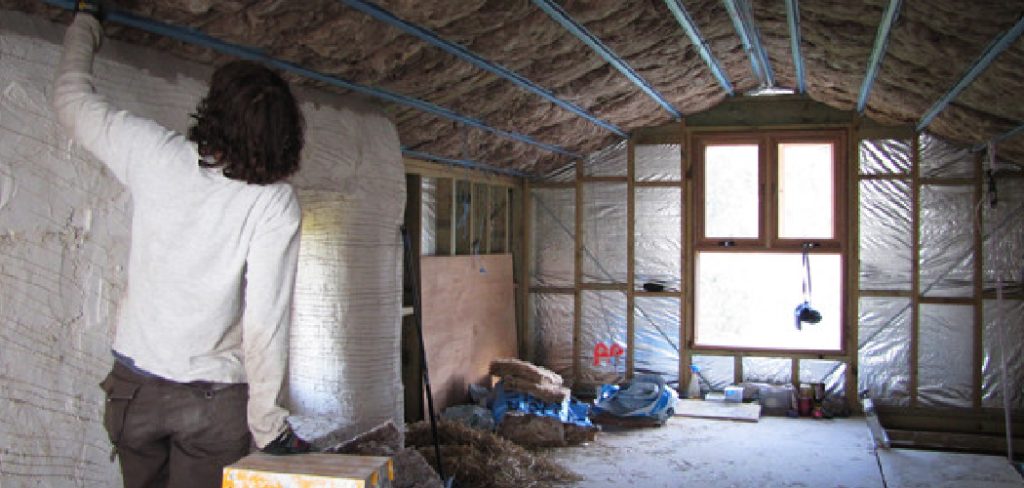
While having some basic knowledge of using tools is recommended for this task, it can also be completed by most DIYers – no matter their level. This blog post will provide you with simple and easy-to-follow instructions on how to lift a shed to replace floor so that you can get your shed lifted off the ground safely and securely. So whether you’re looking for a guide to undertake a full shed relocation or simply need advice about replacing the ground beneath an existing one – let us show you how!
Things to Keep in Mind While Lifting a Shed to Replace Floor
Before you begin, it’s important to keep a few things in mind:
- Make sure that your shed is securely attached to the ground. Determine if there are any loose screws or nails that need tightening before beginning the lift.
- Ensure that all of the materials needed for the job have been purchased and prepared beforehand.
- Make sure you have the help of a few strong friends available to assist with the lift.
- Wear protective clothing and goggles when working in the shed.
- Have a plan for where you will be placing the shed after it has been lifted off the ground.
Required Items
Before getting started, you’ll need to gather the required items. In order to lift a shed and replace the floor, you will need:
- A pair of sturdy ladders
- Plenty of help from someone else (at least three others)
- Appropriate lifting tools for your shed’s size, such as heavy-duty jacks
- Blocks or pallets
10 Ways How to Lift a Shed to Replace Floor
1. Position the Ladder
Start by positioning the ladders on either side of the shed and having your helpers form a line between them. This will help you stabilize the shed while it is being lifted off the ground. Also, make sure that the ladders are positioned at a distance from each other so that they are on either side of the entire shed.
2. Place Blocks
Next, place blocks or pallets underneath the shed in order to support it while it is being lifted off the ground. This will also help protect the shed from damage as it is being lifted. Placing the blocks in a staggered pattern will provide additional support and stability to the shed.
3. Securely Place Jacks
Once you have securely placed the jacks, you can begin lifting up the shed off of the ground. Make sure that all four corners of the shed are lifted evenly so that it does not become unbalanced while being lifted.
4. Remove the Old Flooring
With the shed now in a safe and elevated position, you can begin to remove the old flooring from underneath it. Make sure that all of the old floorings is completely removed before attempting to install new flooring beneath the shed.
5. Install New Flooring
Once the old flooring has been removed, you can now begin to install the new flooring underneath the shed. Make sure that all of the new flooring is properly laid with no gaps or uneven areas. While doing so, also make sure that it is installed securely and level.
6. Lower the Shed Down
When the new flooring has been installed beneath the shed, you can begin to slowly lower the shed onto it using the jacks and ladders. Make sure that all four corners of the shed are evenly lowered in order to avoid any damage.
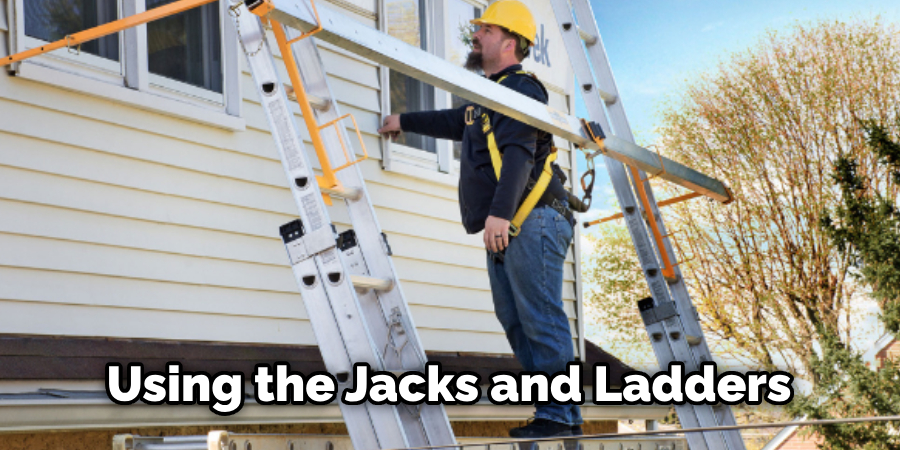
7. Secure the Shed in Place
Once you have lowered the shed onto the new flooring, make sure that it is securely fastened down to its new base using screws or nails. This will help keep the shed firmly in place and prevent it from shifting or moving around unnecessarily.
8. Remove Ladders and Jacks
Once the shed has been properly secured in place, you can now begin to remove the ladders and jacks from around it. Make sure that all of them have been safely removed before you begin to use the shed again.
9. Check for Leveling
Before using the shed again, make sure that everything is level and even. Use a spirit level to check the flooring underneath the shed to make sure that it is properly leveled.
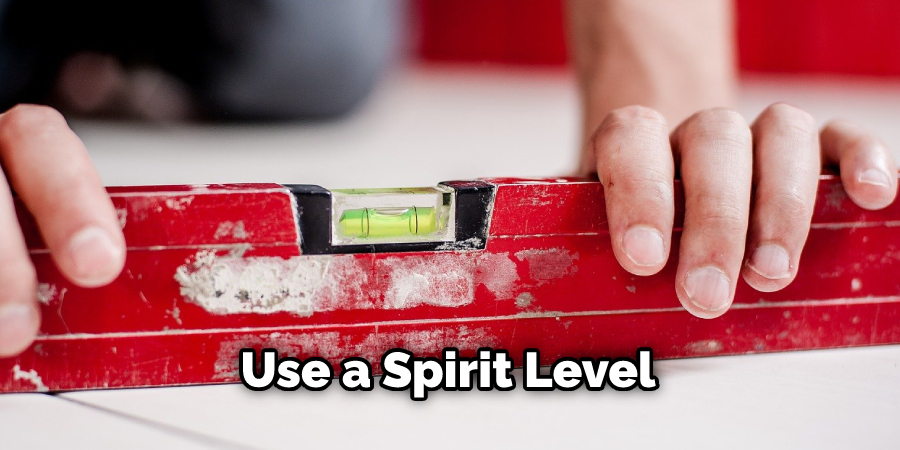
10. Clean Up
After everything has been checked and double-checked, you can now begin to finish up by cleaning up any mess or debris left behind. Make sure all of your tools have been safely put away and that all of the area has been cleared up.
And there you have it! With these ten steps, you now know how to lift a shed to replace floor. Following this guide will provide you with the necessary information for safely and securely replacing and lifting your shed off the ground in order to install new flooring beneath it. Good luck!
If you need any help with lifting a shed or have any further questions, our team at ABC Sheds is here to help. Contact us today for more information about how we can assist you in this process!
8 Safety Precautions to Follow When Lifting a Shed
When it comes time to lift your shed, safety must be paramount. Taking the right precautions will ensure that you are able to minimize any risks associated with lifting and replacing the floor of your shed. Here are 8 safety precautions to take when lifting a shed:
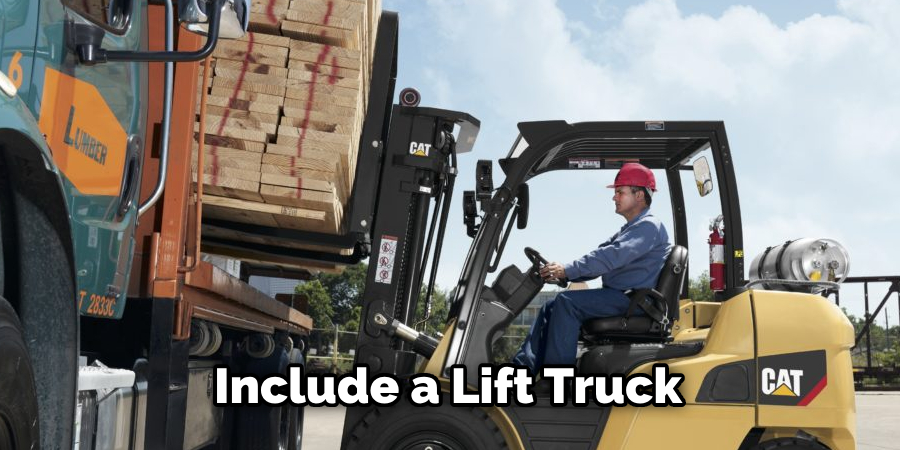
- Choose an appropriate area to lift. Make sure to select an area that is wide enough for the shed and has a solid base. This will help to ensure the stability of your shed during the lifting process.
- Prepare any necessary tools or equipment. Before beginning, take time to assemble all of the necessary tools and equipment you will need in order to lift the shed. This may include a lift truck, jacks, and other tools, depending on the size and weight of your shed.
- Ensure that you have enough manpower. Lifting a shed can be difficult and will require multiple people to help complete the job safely. Make sure you have enough people to assist with lifting, moving, and securing the shed while it is in the air.
- Secure any items inside the shed before lifting. It is important to secure any items that are inside of the shed before lifting it. This will prevent them from moving around or falling out while the shed is in the air.
- Wear protective gear when necessary. Make sure to wear any protective gear that may be necessary for the job, such as gloves, goggles, and a hard hat. Also, be sure to wear closed-toe shoes at all times.
- Use stakes or blocks when necessary. If your shed is large and requires additional support, consider using stakes or blocks around the perimeter of the shed for extra security while it is lifted in place.
- Take frequent breaks throughout the lifting process. Lifting and replacing a shed requires a significant amount of time and effort, so make sure to take regular breaks in order to keep yourself safe.
- Disassemble any tools or pieces when finished. When the job is complete, be sure to disassemble any tools or pieces that were used in the lifting process. This will help to ensure that the shed is secure and will not move around while in place.
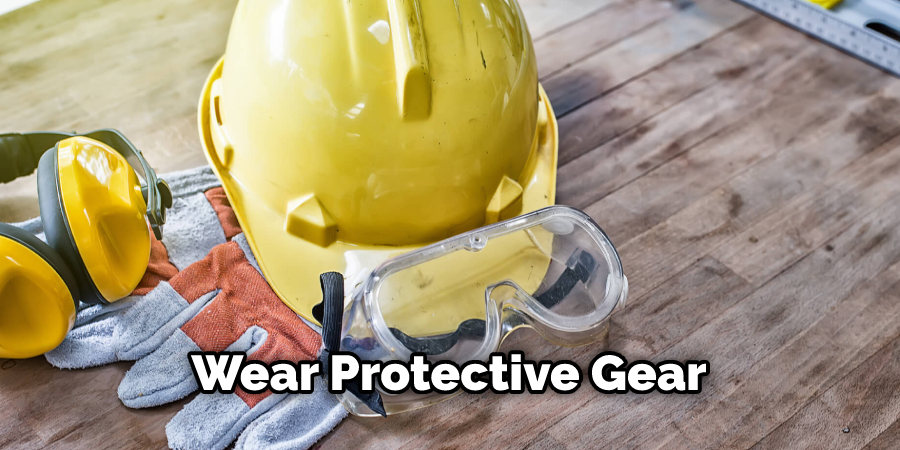
By taking these safety precautions, you can be sure to complete your task of lifting a shed safely and efficiently. Be sure to follow all safety guidelines and instructions when working with any heavy equipment or objects. Doing so will help to keep you safe and minimize any potential risks associated with the job.
Conclusion
By following the steps on how to lift a shed to replace floor outlined above, you can easily replace the floor of a shed yourself. However, safety is always important, so when lifting a shed, be sure to take the necessary precautions, like having multiple people help to prevent any tragic accidents. Additionally, ensure that you double-check all measurements and secure the new floor in place before letting anyone enter or use the shed again.
With some patience and careful planning, you can successfully finish this easy project with only minimal materials and cost. Who knows; maybe this will be just one step in your backyard remodeling journey! Don’t forget to use best practices for installing and maintaining your new floor as well as potential preventive maintenance that may save time and energy later down the road. So why wait? Grab your tools now, and let’s get started!
